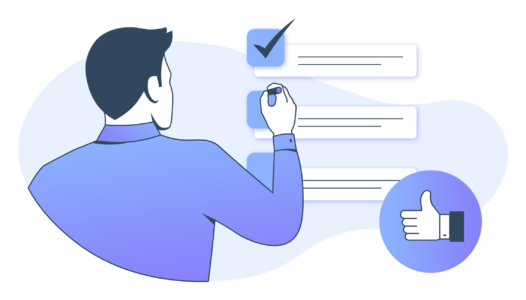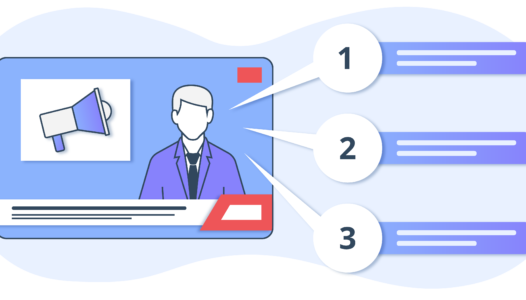by Daniel Vaknine
When it comes to whistleblowing within an organisation, it is a good idea to use a whistleblower system. In short, this is a system that allows employees to report wrongdoings internally. In this article, I’ll go through the different types of whistleblower systems that are available so that you can gain an increased awareness of what methods are available. This in turn makes it easier to decide which methods your organisation can or should offer.
Types of whistleblower systems
Email address for reporting
Many people’s first thought of the whistleblower channel is an email address. Such a system may very well work and suit certain organisations, such as certain authorities, better. However, for most, there are many issues to decide on that require a lot of preliminary work and research, for example when it comes to guaranteeing the correct handling of personal information via e-mail.
In addition to this, it is difficult to report anonymously via e-mail, as the whistleblower needs to create a unique e-mail address for this very purpose and then regularly log into it. This method is also not completely anonymous for the more technically savvy. Furthermore, emails cannot be encrypted at a high enough level, resulting in security risks that can have major consequences.
However, one of the most common problems with email solutions with the new whistleblower law is that the whistleblower must be guaranteed strict confidentiality. In almost all organisations, the IT department can see all incoming and outgoing emails, who sent them, and so on. It is therefore important to ensure that this is not the case for the whistleblowing email.
Moreover, keep in mind that you must send a confirmation that the matter has been received by the whistleblower within 7 days and that the inbox is therefore staffed even during holiday periods. It may also be a good idea to opt out of notifications so that non-authorised persons do not accidentally see the whistleblowing email, but still remember to keep track so that you have time to respond within the right time frames.
Digital/web-based whistleblower system
The most common whistleblowing system for blowing the whistle in the digital age is to use a digital whistleblowing system. This whistleblower system is thus easy to connect to an existing compliance management system. It is also accessible at any time and from any location and offers whistleblowers a central point of contact.
When reporting, whistleblowers fill out a case report form that requires relevant case information. The person reporting has the option to leave their personal information or report anonymously. Visslan offers a high-quality whistleblowing system that contains everything needed, with minimal administration and smooth implementation.
In the whistleblower system, the case manager can also continue to communicate with the whistleblower without the whistleblower having to reveal his identity. You also receive reminders about the legal requirements and notices if something happens in the system, such as a new chat message.
Telephone-based reporting
Telephone-based reporting is still relatively common today, and there are many positive aspects to it. Like digital reporting, phone-based reporting can be available 24/7 from anywhere. The problem, however, is security – phone calls cannot be encrypted at a high enough level to guarantee a high level of security. Documentation can also suffer if whistleblowers sometimes feel that they do not speak the same language as the person answering the phone or that they have to stand in a phone queue to get through.
There are also no integrated functions such as automatic follow-ups and updates or digital HR tools. This, combined with the fact that all reports received in this way need to be noted manually, means that it is not cost-effective and that it takes up a lot of time.
However, verbal reporting can also be enabled through many whistleblowing systems, and some companies choose to offer telephone-based reporting alongside their web-based whistleblowing system.
Physical mailbox for reporting
In the past, this has been sufficient for many companies. Most people who have worked in an office during the 20th and 21st centuries have probably come across a mailbox with a padlock outside the HR department. Before alternative methods existed, this was a common reporting method.
The whistleblower can decide to remain anonymous, and can easily and conveniently submit the report when they themselves feel it is convenient. The negatives are, among other things, that the report can only be submitted in one place, that updating or follow-up is largely impossible for anonymous reports, and that it may not be used in the end.
Open-door reporting
Just as the name suggests, this method involves you stepping into a person in a leadership role and reporting problems verbally, and face-to-face. Although the whistleblower in these cases receives immediate feedback and an opportunity to discuss the issue with a superior, there are also flaws with that.
For example, feedback and updates can be difficult to resolve, and the information is not protected or encrypted in any way. It is also impossible to report anonymously through this method unless extreme measures are taken. Even if, according to the new whistleblower law, it must be possible to book a physical meeting, this should not be the only reporting route a company offers.
How a good whistleblower system works
An optimal whistleblower system should give the whistleblower the opportunity to report anonymously and there should also be the possibility of communication between the case manager and the whistleblower, with the possibility of anonymity throughout the process.
Furthermore, It is good if external parties can be easily added to the case without affecting the integrity or identity of the whistleblower, while the case manager is helped to comply with the Whistleblower Act’s deadlines and guidelines.
The author, Daniel Vaknine, is CEO and Partner of Visslan, a Sweden-based whistleblowing solution to simplify whistleblowing and compliance with the new EU Whistleblowing Directive. Daniel and his team meet Compliance Officers and Legal Counsels on a daily basis to help them with whistleblowing. Through these encounters, many frequently asked questions arise from which they write articles to provide an answer to the question to a broader audience.






